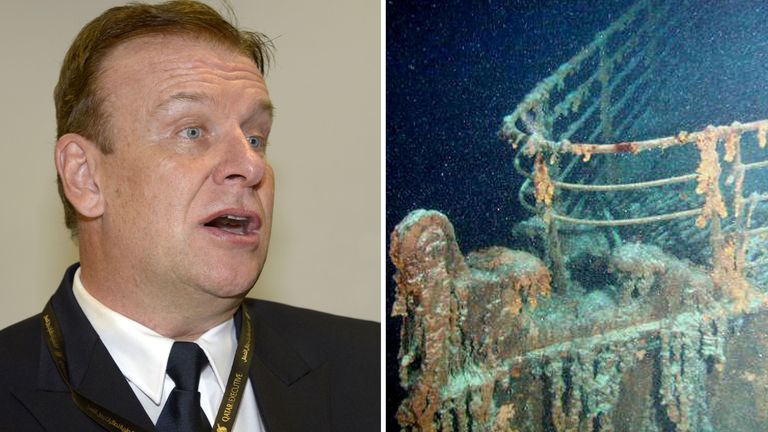
A 59-year-old British wealthy businessman is claimed to be aboard the missing submarine that went missing while exploring the Titanic debris in the Atlantic Ocean. Hamish Harding, who studied Natural Sciences and Chemical Engineering at Cambridge University and holds an Airline Transport Pilots License, rose to prominence as a Blue Origin space traveler. According to the BBC, Harding also holds the Guinness World Record for circumnavigating the globe through the North and South Poles.
Hamish Harding is currently the chairman of Action Aviation
Harding, who is currently the chairman of Action Aviation, a Dubai-based business aviation company, announced his intention to join the team excavating the Titanic disaster in June of last year. The Joint Rescue Coordination Centre in Halifax, Nova Scotia, has previously stated that a vessel was overdue approximately 700 kilometers south of St. John’s, Newfoundland, on Sunday. OceanGate Expeditions confirmed the search for its five-person submersible, focusing on the safety of people aboard and their families.
The corporation expressed gratitude for the assistance provided by government authorities and deep-sea companies, as well as its commitment to the safe return of the crewmembers. OceanGate adviser David Concannon said that contact with the submersible was lost on Sunday morning. He mentioned that the submersible had a 96-hour oxygen supply and that plans were in the works to send a remotely operated vehicle capable of reaching a depth of 6,000 meters (20,000 feet) to the spot.
OceanGate’s submersible missing near Titanic ruins; rescue efforts underway
Action Aviation reported that the company’s chairman, Hamish Harding, was among the visitors on board. CNN stated that the US Coast Guard is looking for five individuals onboard a missing submersible near the Titanic ruins. The US Coast Guard is “bringing all assets to bear” in the search for a submersible near the Titanic debris, according to the statement.
The company’s managing director, Mark Butler, voiced optimism for a successful rescue effort and indicated that an appropriate survival kit was on board. The expedition’s goal was to capture the Titanic’s deterioration, and this was OceanGate’s third annual trip to the famed ocean liner’s ruins. The visitors that funded the expedition paid a high price for their involvement. The voyage was supposed to start in early May in St. John’s, Newfoundland, and end in late June. OceanGate had hired the Canadian vessel Polar Prince to transport people and the submersible to the North Atlantic wreck site.
The Titan submarine was built of titanium and filament-wound carbon fiber and was capable of diving 4,000 meters (13,120 feet) with a comfortable safety margin. OceanGate emphasized its capacity to endure deep ocean pressures as well as its wide viewport, which provides an unparalleled view. Retired Navy rear admiral Chris Parry described the rescue mission as difficult due to the undulating seabed, debris, and the Titanic wreck’s placement in a trench.






